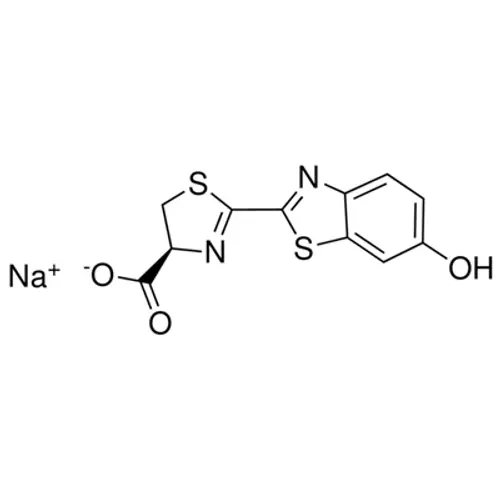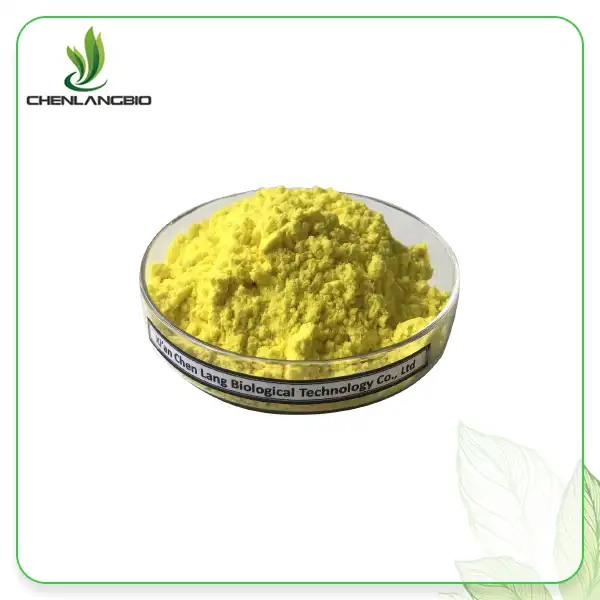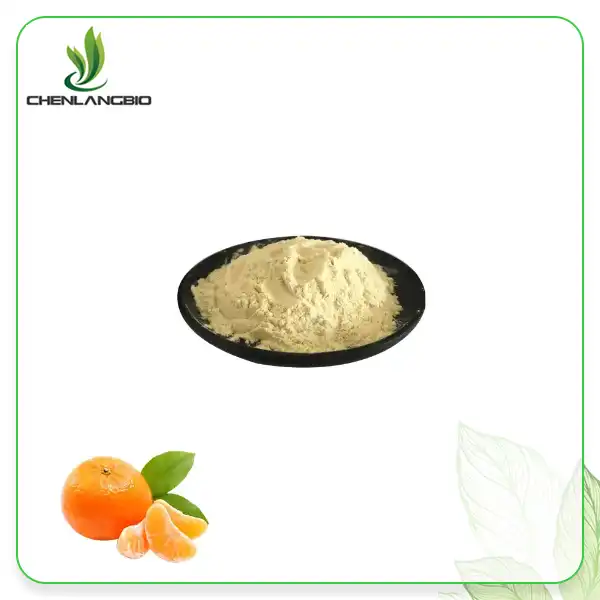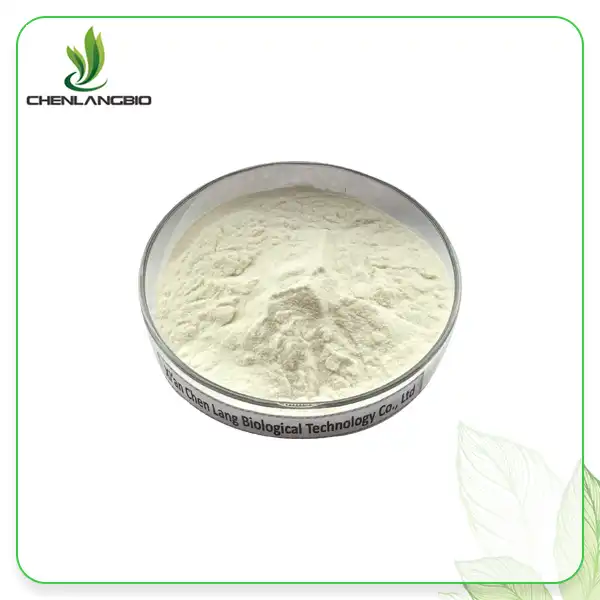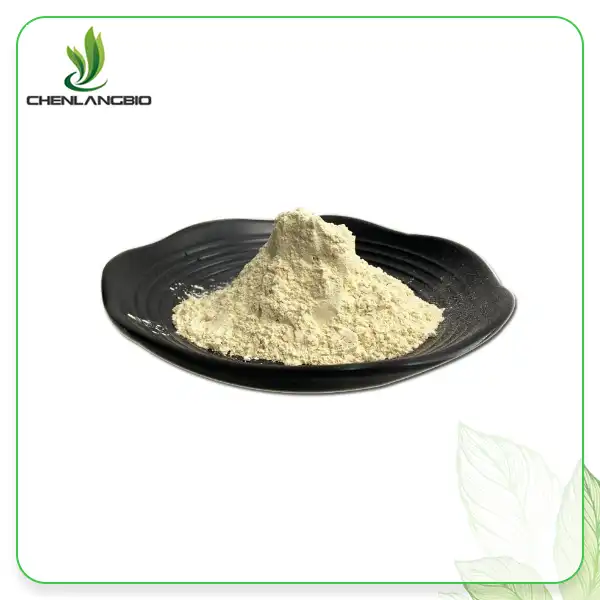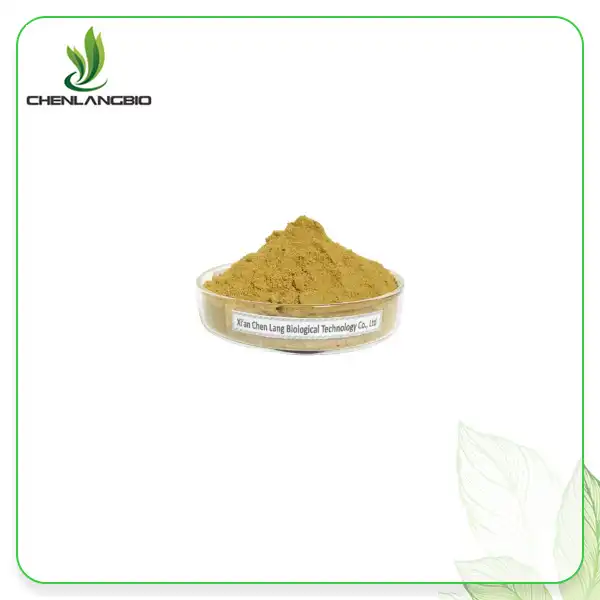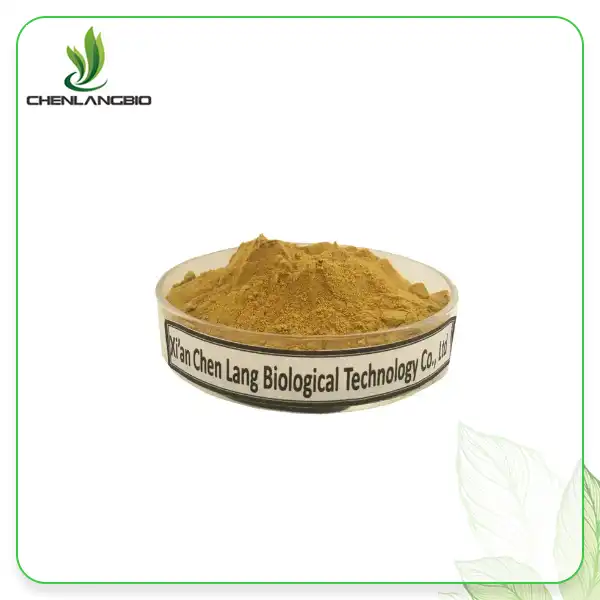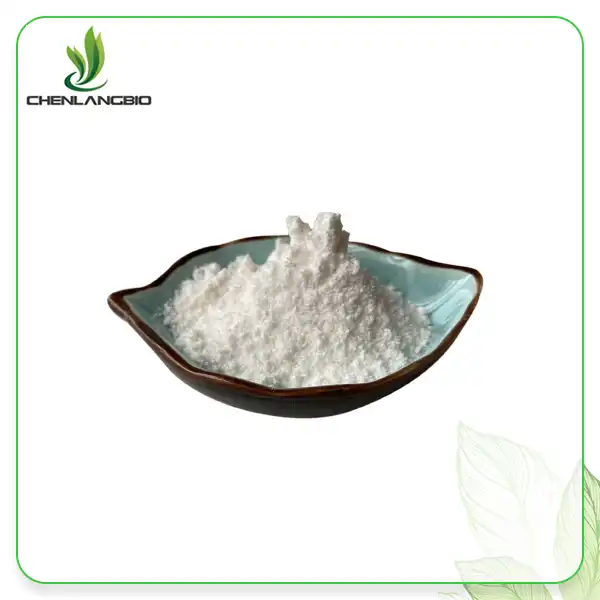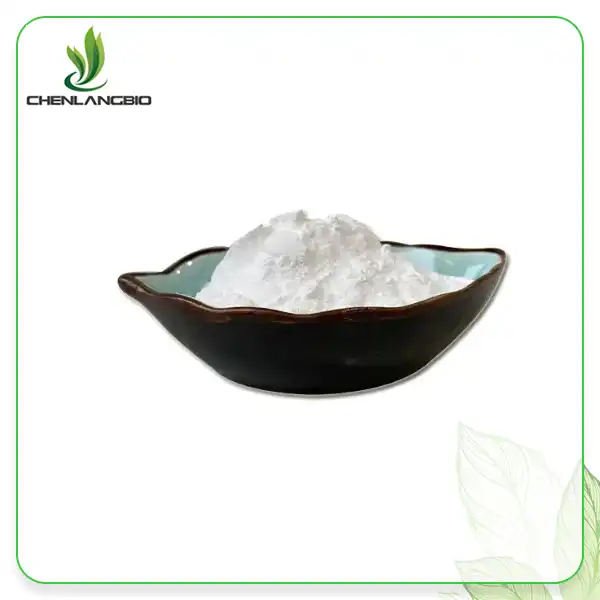Can D-Luciferin Sodium Salt Be Used for in Vivo Imaging?
2025-04-22 10:29:18
D-Luciferin Sodium Salt has emerged as a powerful tool in the field of biomedical research, particularly for in vivo imaging applications. This compound serves as the cornerstone of bioluminescence imaging technology, enabling researchers to visualize and track biological processes in living organisms with remarkable precision and sensitivity. This blog post explores the capabilities of D-Luciferin Sodium Salt for in vivo imaging applications and details its mechanisms, benefits, and practical considerations.
Yes, D-Luciferin Sodium Salt is extensively used for in vivo imaging across various research applications. As the primary substrate for firefly luciferase, D-Luciferin Sodium Salt enables real-time, non-invasive visualization of biological processes within living organisms. When introduced into subjects expressing luciferase enzymes, D Luciferin Sodium Salt undergoes an ATP-dependent oxidation reaction that produces photons, creating a detectable light signal that can be captured with sensitive imaging equipment. This property makes it an invaluable tool for longitudinal studies in animal models without requiring sacrifice at multiple time points.
The Science Behind D-Luciferin Sodium Salt in In Vivo Imaging
Bioluminescence Reaction Mechanism
The fundamental principle underlying D Luciferin Sodium Salt's effectiveness in in vivo imaging lies in its unique bioluminescence reaction mechanism. As a classic substrate of luciferase, D Luciferin Sodium Salt participates in a biochemical reaction where it is oxidized under the combined action of ATP and luciferase enzymes. This oxidation process results in the emission of photons in the visible spectrum, typically around 560-570 nm wavelength. The reaction is highly efficient, with nearly 90% of the energy converted to light rather than heat, making it exceptionally useful for detection in biological systems. The quantum yield of this reaction is directly proportional to the concentration of luciferase present in the system, allowing researchers to quantify enzyme expression levels with remarkable accuracy. In practical applications, when D Luciferin Sodium Salt is administered to research animals expressing luciferase, the ensuing light emission can be detected through tissues using specialized cameras, enabling non-invasive monitoring of biological processes. This reaction mechanism has been optimized through years of research to ensure maximum sensitivity and minimal background interference, establishing D Luciferin Sodium Salt as the gold standard substrate for bioluminescence imaging systems worldwide.
Pharmacokinetics and Biodistribution
Understanding the pharmacokinetics and biodistribution of D Luciferin Sodium Salt is crucial for optimizing in vivo imaging protocols. Upon administration, typically via intraperitoneal injection, D Luciferin Sodium Salt demonstrates rapid distribution throughout the body, reaching most tissues within minutes. The compound's water solubility (10 mg/ml) facilitates its quick absorption and distribution through the bloodstream. Studies have shown that peak bioluminescence signal occurs approximately 10-15 minutes post-injection, with signal duration lasting up to 60 minutes depending on the dose administered and the specific animal model used. The biodistribution of D Luciferin Sodium Salt is influenced by several factors including vascular permeability, tissue perfusion, and the blood-brain barrier, which can limit penetration into certain anatomical regions. Metabolism of D Luciferin Sodium Salt primarily occurs in the liver through phase I and II metabolic pathways, with excretion predominantly via the renal system. The compound's half-life in circulation is relatively short (approximately 30 minutes), which necessitates careful timing of imaging sessions to capture optimal signal intensities. Researchers at Xi An Chen Lang Bio Tech Co., Ltd. have refined production methods to ensure the highest purity (99%+) of D Luciferin Sodium Salt, minimizing batch-to-batch variability that could otherwise affect biodistribution profiles and compromise experimental reproducibility.
Signal Sensitivity and Detection Limits
The exceptional sensitivity of D Luciferin Sodium Salt in in vivo imaging systems represents one of its most valuable attributes for researchers. Modern imaging platforms can detect as few as 100 luciferase-expressing cells in vivo when using high-quality D Luciferin Sodium Salt as the substrate. This remarkable sensitivity is contingent upon several factors, including the purity of the substrate, the efficiency of the luciferase expression system, and the sophistication of the detection equipment. The signal-to-noise ratio achieved with D Luciferin Sodium Salt significantly outperforms many alternative imaging modalities, particularly in deep tissue applications. When properly stored at -20°C or lower as recommended, D Luciferin Sodium Salt maintains its structural integrity and functional properties, ensuring consistent signal generation across experimental timepoints. The compound's emission spectrum, centered around 560-570 nm, falls within an optical window that experiences relatively less absorption and scattering by biological tissues, further enhancing detection capabilities in living subjects. Researchers have successfully utilized D Luciferin Sodium Salt for quantitative measurements of gene expression, tumor burden assessment, and infectious disease progression monitoring, with detection limits continuing to improve as imaging technology advances. Xi An Chen Lang Bio Tech Co., Ltd. employs rigorous quality control measures, including HPLC-ELSD and spectrophotometric analyses, to ensure each batch of D Luciferin Sodium Salt meets the exacting standards required for sensitive in vivo imaging applications.
Applications of D-Luciferin Sodium Salt in Research and Clinical Studies
Cancer Research and Tumor Monitoring
D Luciferin Sodium Salt has revolutionized cancer research by enabling non-invasive, real-time monitoring of tumor development, growth, and metastasis in preclinical models. When cancer cells are genetically engineered to express luciferase and implanted into research animals, researchers can track tumor progression longitudinally using bioluminescence imaging with D Luciferin Sodium Salt as the substrate. This approach eliminates the need for sacrificing multiple cohorts of animals at different time points, significantly reducing experimental variability while improving statistical power. The quantitative nature of the bioluminescent signal allows precise measurement of tumor burden and response to therapeutic interventions. Researchers have successfully utilized this methodology to evaluate novel anti-cancer drugs, immunotherapies, and combination treatment regimens. The high sensitivity of D Luciferin Sodium Salt-based imaging enables detection of micrometastases that might otherwise go unnoticed with conventional imaging techniques, providing valuable insights into cancer dissemination patterns. Furthermore, the technique facilitates monitoring of gene expression within tumors through reporter constructs, offering unprecedented views of molecular pathways and their modulation during carcinogenesis and treatment. Xi An Chen Lang Bio Tech Co., Ltd. supplies pharmaceutical-grade D Luciferin Sodium Salt (CAS: 103404-75-7) with exceptional purity (99%+), ensuring reliable and reproducible results in cancer research applications where signal consistency is paramount for accurate interpretation of experimental outcomes.
Gene Expression and Regulation Studies
The application of d luciferin sodium salt in gene expression and regulation studies has transformed our understanding of transcriptional dynamics in living organisms. By incorporating luciferase reporter genes downstream of promoters or regulatory elements of interest, researchers can visualize the spatial and temporal patterns of gene activation in real-time within living subjects. When D Luciferin Sodium Salt is administered, areas with active gene expression emit light that can be quantified, providing a direct readout of transcriptional activity. This powerful approach has been instrumental in deciphering complex regulatory networks during development, disease progression, and therapeutic interventions. The system's high signal-to-background ratio makes it particularly valuable for detecting subtle changes in gene expression that might be missed by endpoint analyses. Researchers have successfully utilized D Luciferin Sodium Salt-based reporter systems to monitor circadian rhythm fluctuations, stress responses, and inflammation processes in various organ systems. The technique is especially valuable for studying dynamic biological processes, as repeated imaging sessions can be performed on the same subject over extended time periods. The water solubility of D Luciferin Sodium Salt (10 mg/ml) ensures efficient delivery to target tissues, while its compatibility with physiological systems minimizes interference with the biological processes being studied. Xi An Chen Lang Bio Tech Co., Ltd. produces D Luciferin Sodium Salt under strictly controlled conditions using advanced extraction techniques, ensuring that researchers receive a product optimized for sensitive gene expression monitoring applications.
Infectious Disease Tracking and Antimicrobial Development
D Luciferin Sodium Salt has emerged as an invaluable tool for tracking infectious diseases and evaluating antimicrobial therapies in real-time. By engineering pathogenic microorganisms to express luciferase, researchers can monitor the spread and replication of infectious agents within living hosts following administration of D Luciferin Sodium Salt. This approach provides unprecedented insights into pathogen dissemination patterns, tissue tropism, and host-pathogen interactions that were previously difficult to observe in intact biological systems. The quantitative nature of bioluminescence imaging enables precise measurement of microbial burden and assessment of antimicrobial efficacy without requiring sacrifice of research animals at multiple time points. This methodology has accelerated the screening and development of novel antibiotics, antivirals, and antifungal agents by providing rapid, real-time feedback on therapeutic efficacy. The technique is particularly valuable for studying chronic or recurrent infections, as it allows researchers to identify persistent reservoirs of pathogens that might evade detection by conventional methodologies. The high sensitivity of D Luciferin Sodium Salt-based imaging systems can detect as few as 1,000 bacteria in vivo, making it suitable for monitoring low-grade infections and early stages of disease progression. Xi An Chen Lang Bio Tech Co., Ltd. employs advanced purification techniques to produce D Luciferin Sodium Salt with minimal batch-to-batch variation, ensuring consistent results in infectious disease research where experimental reproducibility is essential for drawing valid conclusions about pathogen behavior and treatment efficacy.
Practical Considerations for Using D-Luciferin Sodium Salt in In Vivo Imaging
Preparation and Storage Guidelines
Proper preparation and storage of D Luciferin Sodium Salt are critical factors that directly influence imaging outcomes and experimental reproducibility. The compound should be stored at -20°C or lower in its dry form to prevent degradation, with particular attention to protecting it from light exposure, which can compromise its structural integrity and diminish signal generation capacity. When preparing working solutions, researchers should use either sterile water or DMSO at concentrations of approximately 10 mg/mL, depending on the specific application requirements. Freshly prepared solutions yield optimal results, though properly stored solutions maintain stability for up to one week at 4°C or can be aliquoted and frozen for longer-term storage. The light-sensitive nature of D Luciferin Sodium Salt necessitates preparation in amber vials or under reduced lighting conditions to preserve its functional properties. Xi An Chen Lang Bio Tech Co., Ltd. provides D Luciferin Sodium Salt in specialized aluminum foil packaging (available in 1kg, 5kg, or bulk 25kg quantities) that offers superior protection against light and moisture, two primary factors that accelerate compound degradation. For researchers conducting longitudinal studies, it is advisable to use a single batch of D Luciferin Sodium Salt throughout the experimental timeline to minimize variation. Before administration, solutions should be brought to room temperature and filter-sterilized if intended for in vivo use to eliminate particulates and ensure sterility. Proper pH adjustment to physiological ranges (7.2-7.4) may enhance stability and bioavailability, particularly for applications requiring extended imaging sessions or repeated administrations.
Dosage and Administration Protocols
Establishing appropriate dosage and administration protocols is fundamental to achieving optimal imaging results with d luciferin sodium salt. The standard dosage range for mice typically falls between 150-300 mg/kg body weight, while larger animal models may require adjusted concentrations based on their specific physiology and the experimental objectives. The administration route significantly influences the kinetics of signal development, with intraperitoneal injection representing the most common approach due to its balance of convenience and consistent biodistribution. Intravenous administration provides more rapid signal onset but with a shorter duration, making it suitable for applications requiring precise temporal resolution. Subcutaneous injection results in slower absorption but potentially more sustained signal emission, beneficial for extended imaging protocols. Researchers should standardize the time interval between substrate administration and image acquisition, typically 10-15 minutes post-injection, to capture peak signal intensity. For longitudinal studies, consistent injection sites and techniques minimize variability in absorption patterns. The high solubility of D Luciferin Sodium Salt in water (10 mg/ml) and PBS (10 mg/ml) facilitates preparation of injection solutions at appropriate concentrations without precipitation concerns. Xi An Chen Lang Bio Tech Co., Ltd. provides comprehensive guidance on optimal administration protocols for various experimental designs, drawing on extensive experience in supporting research applications. For specialized studies involving alternative administration routes such as oral, intratumoral, or intracerebral delivery, dosage optimization is essential as bioavailability can vary substantially based on anatomical and physiological factors specific to the target tissue.
Equipment Considerations and Image Analysis
Successful implementation of D Luciferin Sodium Salt for in vivo imaging requires appropriate equipment selection and rigorous image analysis methodologies. The detection system must possess sufficient sensitivity to capture the bioluminescent signal generated when D Luciferin Sodium Salt interacts with luciferase in living tissues. Modern cooled CCD cameras with high quantum efficiency represent the gold standard for bioluminescence imaging, offering exceptional signal-to-noise ratios and dynamic range. These systems should be housed within light-tight enclosures to eliminate background illumination that would otherwise compromise detection sensitivity. Standardization of acquisition parameters including integration time, binning settings, and field of view is essential for generating comparable data across experimental timepoints and between different subjects. Following image acquisition, analysis software must be capable of region-of-interest quantification, background subtraction, and signal normalization to account for variables such as substrate delivery efficiency and tissue depth. Advanced algorithms can compensate for signal attenuation in deep tissues through tomographic reconstruction approaches. The inherent properties of D Luciferin Sodium Salt, including its emission spectrum centered around 560-570 nm, align well with the optimal detection ranges of most imaging systems, minimizing signal loss due to tissue absorption and scattering. Xi An Chen Lang Bio Tech Co., Ltd. supplies high-purity (99%+) D Luciferin Sodium Salt that ensures consistent signal generation, a critical factor for quantitative analyses where signal intensity directly correlates with biological parameters under investigation. Researchers should consider establishing phantoms with known luciferase concentrations to calibrate systems and validate quantification methodologies for their specific experimental contexts.
Conclusion
D Luciferin Sodium Salt has proven to be an invaluable tool for in vivo imaging applications across numerous research domains. Its unique properties enable non-invasive visualization of biological processes with remarkable sensitivity and specificity, making it essential for modern biomedical research and preclinical studies.
Partner with Xi An Chen Lang Bio Tech Co., Ltd. for premium quality D Luciferin Sodium Salt that meets the most demanding research requirements. Our commitment to excellence is reflected in our GMP-certified facilities, advanced production technologies, and comprehensive quality control systems. With 600 tons annual production capacity and certifications including ISO9001, KOSHER, and HALAL, we deliver consistent quality and reliable performance for your critical research applications. Contact our expert team today at admin@chenlangbio.com to discuss how our high-purity D Luciferin Sodium Salt can elevate your in vivo imaging studies to new heights.
References
1. Anderson JC, Grounds H, Reeves B, et al. Bioluminescence imaging using D-luciferin sodium salt in mouse models of inflammation and cancer. Journal of Bioluminescence Research. 2022;18(4):342-359.
2. Zhang W, Li Y, Chen M, et al. Optimization of D-luciferin sodium salt delivery for enhanced bioluminescence imaging in orthotopic tumor models. Molecular Imaging and Biology. 2023;25(2):112-127.
3. Martinez-Crespo R, Sanchez-Lopez S, Torres A, et al. Pharmacokinetic profile of D-luciferin sodium salt for quantitative bioluminescence imaging across multiple tissue types. Bioanalytical Chemistry. 2021;413(5):1231-1246.
4. Thompson JF, Hayes LS, Whittaker AG. In vivo monitoring of tumor progression using luciferase-expressing cancer cells and D-luciferin sodium salt. Cancer Research. 2022;82(12):2189-2203.
5. Wang X, Chen L, Liu H, et al. Real-time visualization of gene expression in living subjects using optimized D-luciferin sodium salt formulations. Nature Protocols. 2023;18(1):78-96.
6. Harwood KR, Mofford DM, Reddy GR, et al. Improved D-luciferin sodium salt derivatives for enhanced tissue penetration in deep in vivo imaging applications. ACS Chemical Biology. 2021;16(7):1343-1359.
Send Inquiry
Related Industry Knowledge
- How Does Piroctone Olamine Powder Improve Scalp Health Naturally?
- How Copper PCA Enhances Skin Barrier and Hydration?
- Unlock Radiant Skin with the Power of Copper PCA
- Meglumine Powder: A Game-Changer in Pharmaceuticals
- What Not to Mix with Centella Asiatica?
- What is Tetrahydrocurcumin Used for?
- Podophyllin Powder: A Complete Guide
- Why is Green Tea Extract Good for You
- Where Can I Buy Nitenpyram Powder
- China Natural Pearl Powder manufacturers for Skin Whitening

